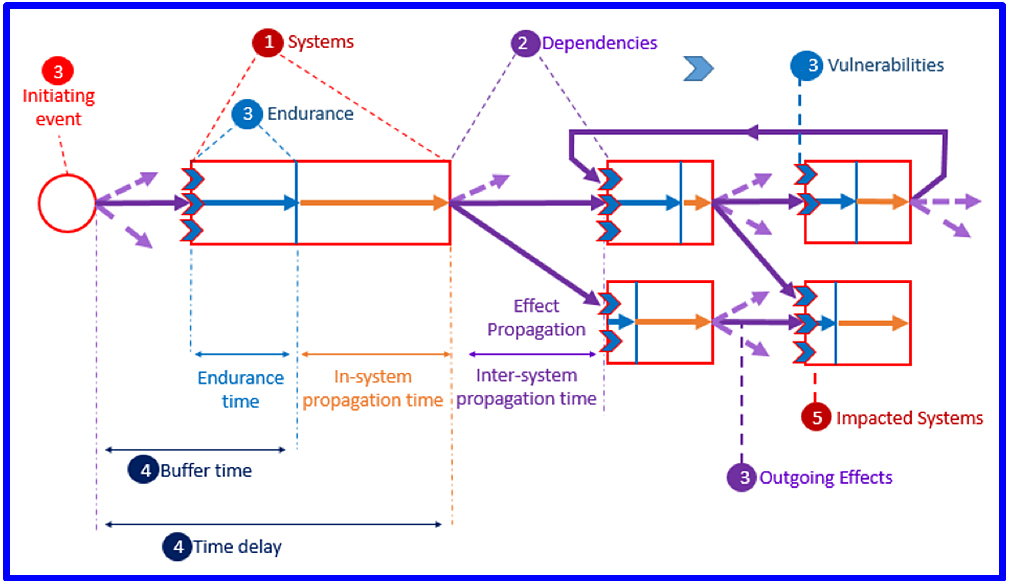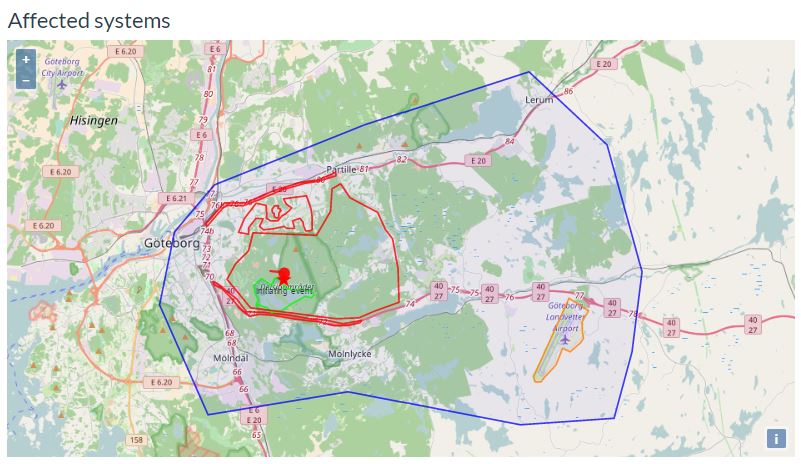CascEff Incident Evolution Methodology (IEM)
One of the main objectives of CascEff has been to develop an Incident Evolution Methodology
(CascEff IEM) to support the understanding and modelling of cascading effects, i.e. dynamically spreading of disturbances between dependent systems within a given territory.
The Incident Evolution Methodology offers a decision support tool for crisis managers, critical infrastructure providers and other stakeholders at regional level. This methodology can be used in different phases (planning, preparation, response, recovery) of emergency management of small and large incidents with cascading effects in a specific region (case).

Schematics of the Incident Evolution Methodology (IEM). The numbers in the figure refer to the different steps of the methodology (listed below).
The IEM is based on systems, the vulnerabilities of these systems and the dependencies between them. A “system” refers to a distinct societal unit (such as a sector, function, collective, infrastructure or nature resource) which may be affected by, or give rise to, consequences in another unit. Examples of systems could be an industrial site, power plant, a road, a hospital or a school, but also many other units described by any of the identified 22 system categories.
Some important terms illustrated in the figure are:
- Initiating event: the first in a sequence of natural (e.g. flood), accidental (e.g. fire) or intentional (e.g. bombing) events that may affect one or several systems.
- Dependency: mechanism whereby a state change in one system can affect the state of another system.
- Vulnerability: intrinsic properties of something resulting in susceptibility to a risk source that can lead to an event with a consequence.
- Endurance time: time a system can resist incoming effects before they start to create impact on the system.
- Propagation time: the time it takes for the effects from the initiating event or an output of a system to propagate and reach the borders of a dependent system.
- Buffer time: the time between the start of an outgoing effect in the originating system and the time before a cascading effect occurs in a dependent system, i.e. when the performance of the dependent system starts to degrade. The buffer time is the sum of the Propagation time and the Endurance time.
- Time delay: the time until when the output of a specific system is affected in relation to when the initiating event starts or the output of a system it depends upon is firstly affected. Time delay is hence the sum of the Buffer time and the Latent period. The concept can be used to signal “windows of opportunities” for breaking chains of cascading effects.
The methodological framework of the CascEff IEM is divided into six steps:
- Set the case area and identify the relevant systems within this determined territory. The systems are described in terms of functionality/provision services, vulnerabilities and potential outgoing effects.
- Identify dependencies between the systems.
- Set initiating event and propagate the effects between the systems.
- Determine temporal effects (including e.g. buffer times).
- Assess the impacts within the categories Social, Human, Economic, Environmental and Infrastructure, and their sub-categories.
- Identify key decision points.
The use of the CascEff IEM is subject to an Attribution ShareAlike license.
The CascEff IEM is described in more detail in deliverable D4.2.
CascEff Incident Evolution Tool (IET)
To illustrate the CascEff IEM, an Incident Evolution Tool (IET) was developed. It contains the basic contents of the different steps of the IEM. It is in the CascEff IET possible to define different types of systems and assign properties to these systems to determine the dependencies between the systems. The information can then be used to simulate the cascading effects as the results of a specific initiating event, e.g. a land slide, flood, fire or power outage.

Illustration of a case (blue border) in the IET and affected systems (coloured green, orange and red, respectively) within that case.
Contact person
